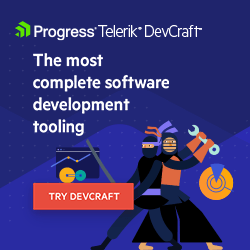Communicating for Change: Creating a Communication Plan

A communication plan designed to get your audience to change starts with deciding who you’re going to communicate with, when you’re going to communicate with them, and what documents, videos and presentation you need to deliver.
Think of it this way: When you communicate, you’re interrupting the person you’re talking to. It just makes matters worse if you need to interrupt them multiple times.
You’ve seen communication examples like this at work—even been the responsible party: when you’re trying to sell your company’s new application to potential customers; or when you’re tasked with changing the way your organization does things (implementing a new safety program, for example); or when your team is rolling out a new application for your organization.
In all these scenarios you are—to be polite—trying to get people to change. Let’s be impolite: You’re asking people to do what you want. If the audience is small (ideally, a single person), you can go and talk to that person (or call them or email them): a “high-touch” solution.
As the number of people increases, though, you’ll need a strategy that’s “lower touch,” probably built around written documents, emails, video communication and/or group presentations. That application you’re rolling out? You need to communicate with the staff using the application, their managers, the people downstream of the application that are affected by it … and probably more. Each of those people is interested in different information and values different things about that application.
If you’re using a “low-touch” strategy, not only do you need to create documents/videos/presentations—you need to create ones that those people will actually read/view/pay attention to. (I’ll just use “documents” and “read” from now on.) That’s not going to happen by accident or luck: You’re going to need, at the very least, some way to decide what documents you need to create (this post) and what you’ll put in those documents (my next post).
Your Purpose: What Are You Trying to Do?
Your starting point is deciding what your purpose is.
For that commercial software application, is your purpose to sell a lot of units? Or is your purpose to get users to upgrade to a new version of an existing application? For the safety protocols you’re trying to get people to adopt, do you need people’s “hearts and minds”? Or do you just need token compliance? For an internal app, is using the new app mandatory and, as a result, your purpose to reduce disruption during the migration? Or is using the app optional and you’re trying to drive up the adoption rate?
Once you know what your purpose is, you can select your audiences: Who actually needs to read your document for you to get the change you want?
What Documents Do You Need?
If you only need one group of people to meet your purpose (i.e., influencers or decision makers), that’s great. More typically, when there are more than a few people involved, you’ll need to communicate multiple messages to multiple audiences (I covered crafting a message for an audience in an earlier post).
Regardless of how many audiences you have, the next step is to recognize when you can intervene in your audience’s lives: When will each audience actually care about your message?
Remember that you are interrupting the lives of your readers and they’re only going to give up their time grudgingly. If you can target your communication to support something the audience is doing, then you’re far more likely get your audience’s attention. You need to identify, for want of a better word, each of your audience’s scenarios.
For example, for the safety awareness program, you want to address scenarios when the user is exposed to risk. When it comes to selling a commercial application, you want to target the scenario where using/acquiring the new application will make the reader’s life easier or cheaper or more efficient—whatever the reader (not you) thinks of as “better.” For the internal application, you want to address the scenario where the user can see that they can no longer avoid using the new application. For people downstream from the new internal application, you want to address the scenario when those people suddenly see the difference in their lives (the “Why is this behaving differently?” scenario).
Once you’ve got a list of audiences and scenarios, you can prioritize the documents you want to create. Prioritization matters because, I bet, you don’t have the time or money to communicate with every audience on every scenario. Even if you do have all the time/money you need (it could happen …) you still must schedule what you need to do first and what can be left to later. You’ll decide what criteria you’ll use to prioritize your documents.
Here’s the bad news, though: While you now know what documents you’ll probably create, you still need to craft those documents so they will get read and acted on. And just because you have multiple audience/scenario combinations, that doesn’t necessarily mean you need to create multiple, separate documents. I’ll cover those topics in my next post (I’ve always loved a cliffhanger ending).

Peter Vogel
Peter Vogel is both the author of the Coding Azure series and the instructor for Coding Azure in the Classroom. Peter’s company provides full-stack development from UX design through object modeling to database design. Peter holds multiple certifications in Azure administration, architecture, development and security and is a Microsoft Certified Trainer.

